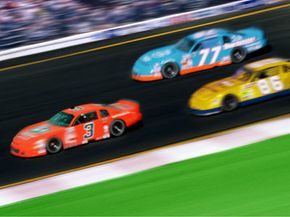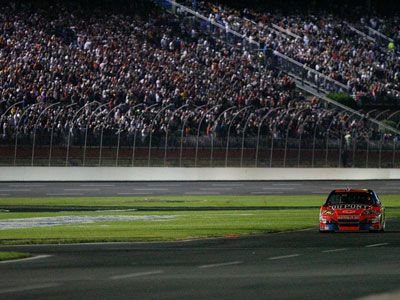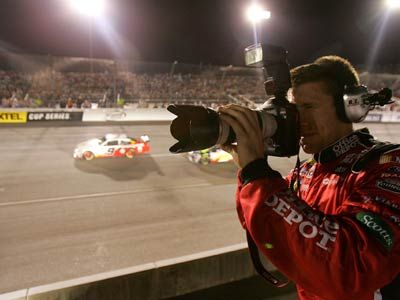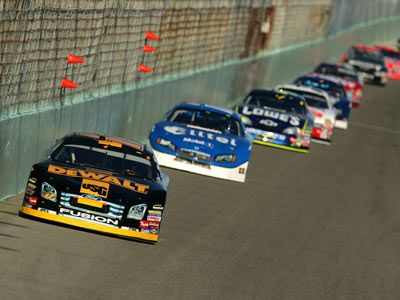NASCAR. You know it for the sights, the sounds, and the speed. Maybe you're an avid fan or perhaps you're altogether unfamiliar with the actual races. Some fans wait all year for big races, showing up days in advance to camp out and make an event out of it. And then there are the drivers. To them, race day has been months in the making, with their cars being built from the floor up in shops specially made for the purpose. Long gone is the day of slapping some paint on an old Taurus and calling it good. In this article, we'll cover the basics of painting a stock car.
From the basic black of the Model- T to the brown and orange of the Home Depot runner, cars of all purposes have always had some sort of paint job. People like certain colors and enjoy being able to display their preference. But NASCAR cars take color a little bit further than your own Chevy, using the color schemes, logos and decals of their sponsors as a way to brighten the landscape and advertise their partners' business. The sponsors love it -- score a win, and your name is all over the news -- and the fans identify with it.
Advertisement
But with so many people involved, how is it possible to have a car everyone will like? With sponsors shelling out millions, it's no small matter. After all, when you think about the speeds these vehicles reach, you can see how it might be hard to make out that Kellogg bumper sticker. Drivers and sponsors want to be sure fans are able to distinguish their cars from the pack, but not at the cost of durability and rules.
Paint starts at the chassis and underbody (in low-light places, like the pits, lighter colors can be easier to work with) and works its way up to the finished products we see on our television screens [source: Gomez]. There's a lot of work in that paint job, and we're about to dip into it. To see what goes on first, read on.
Advertisement



